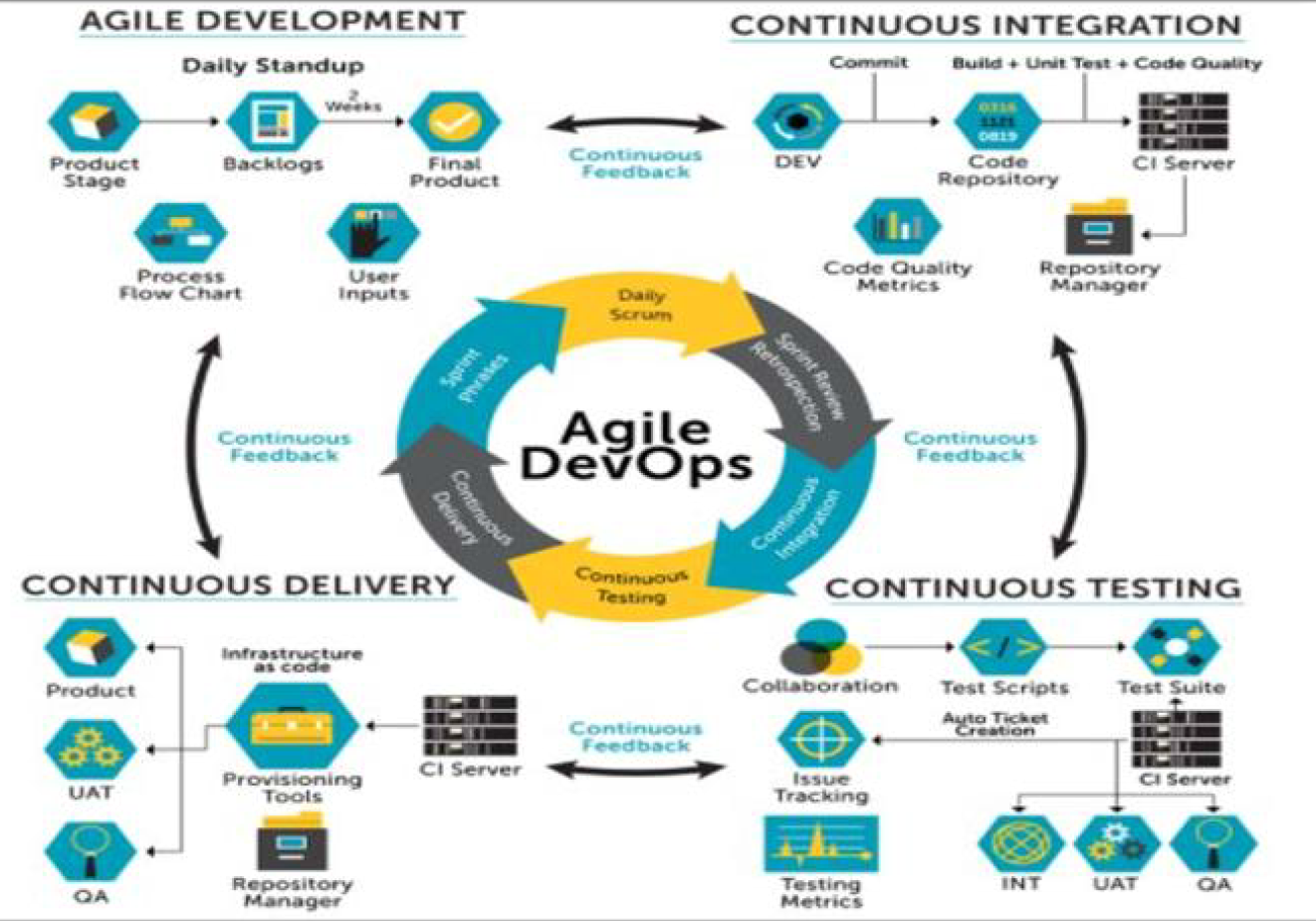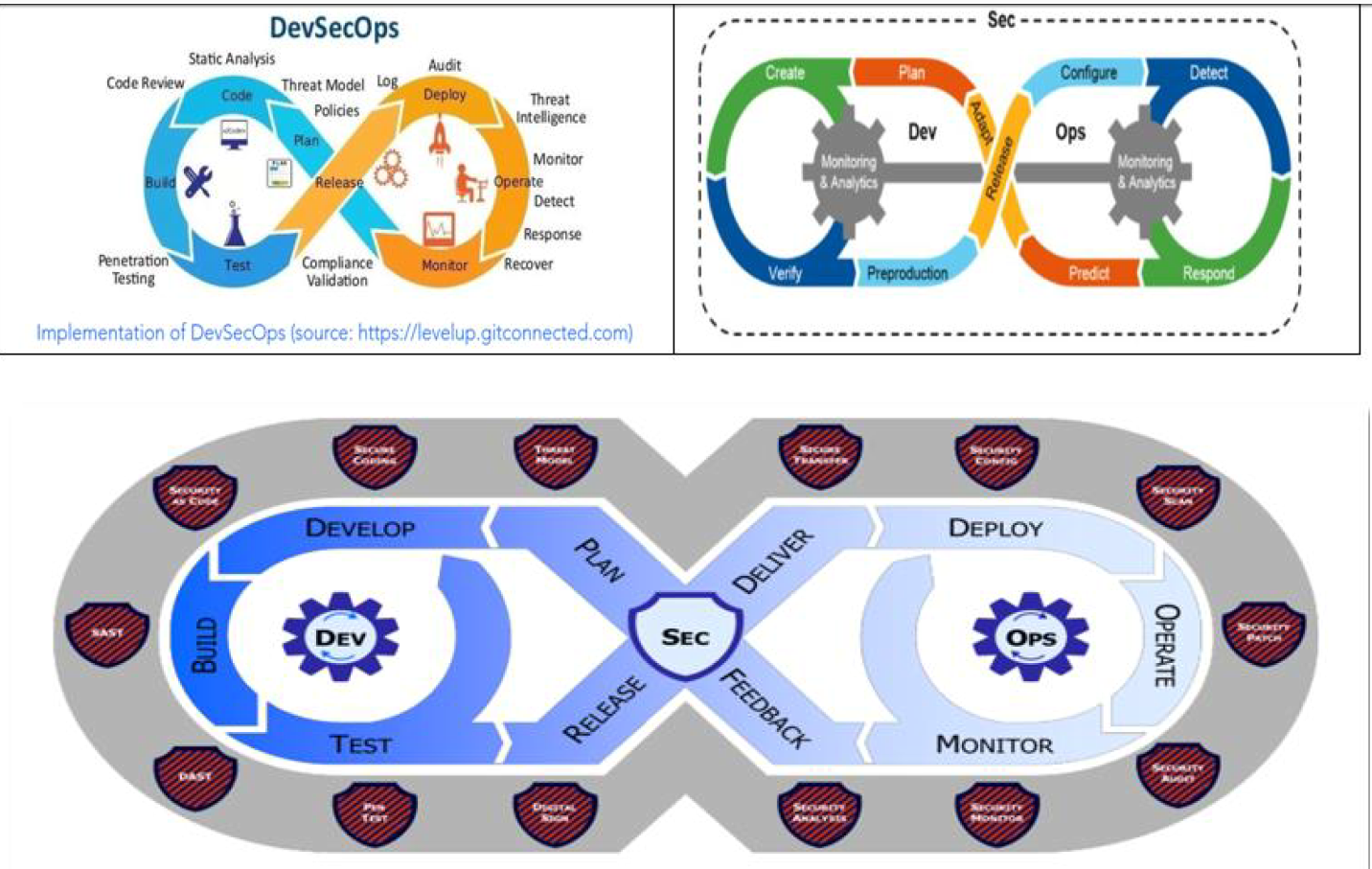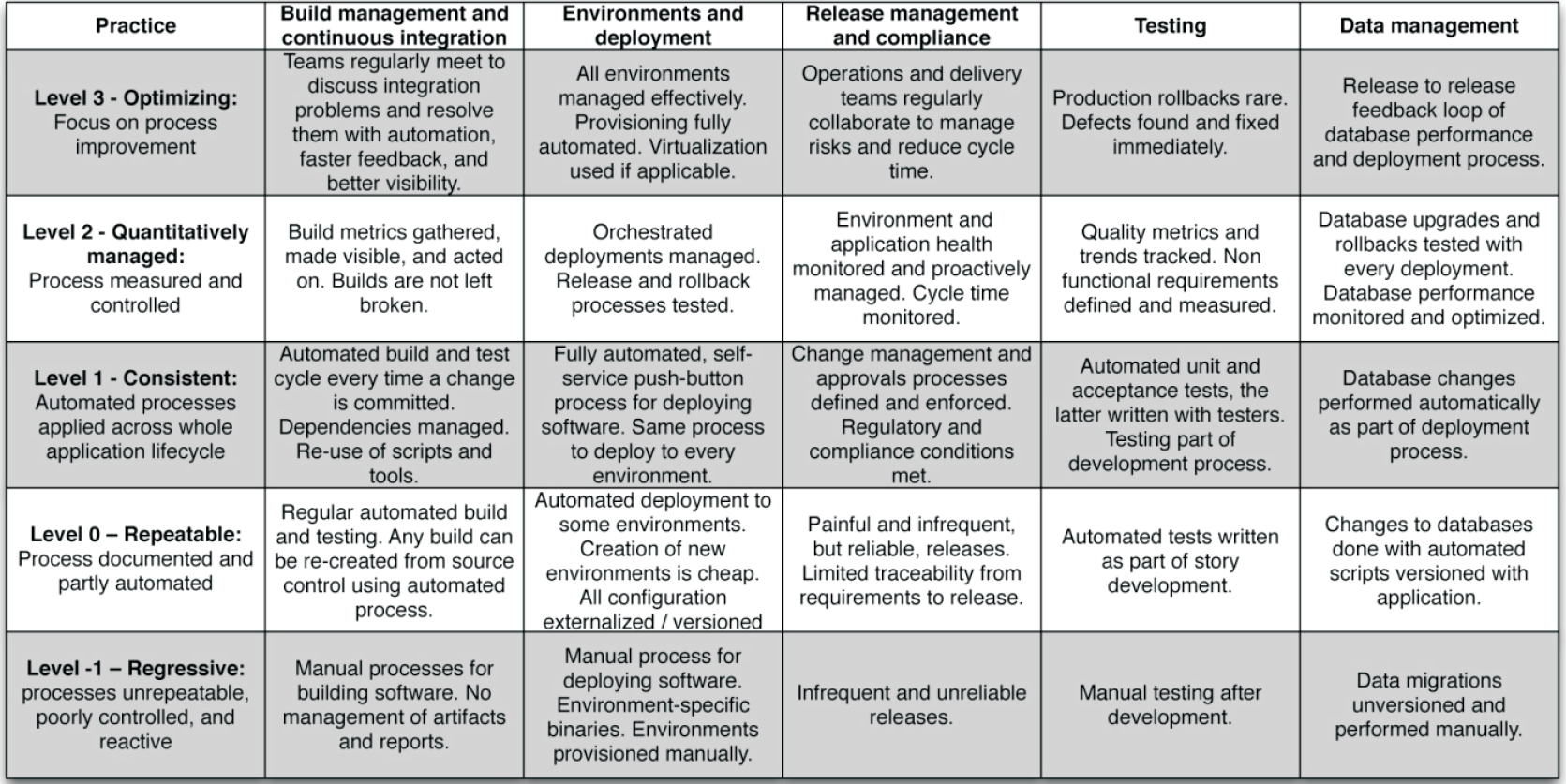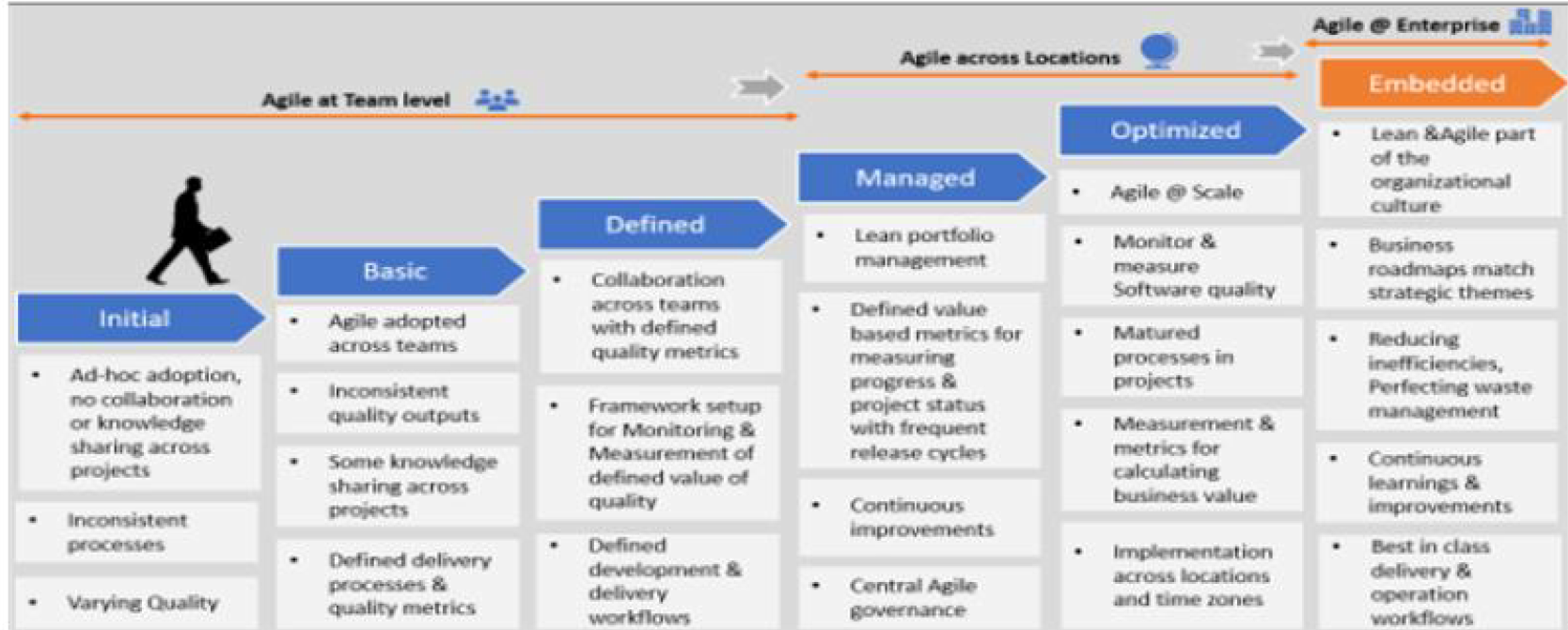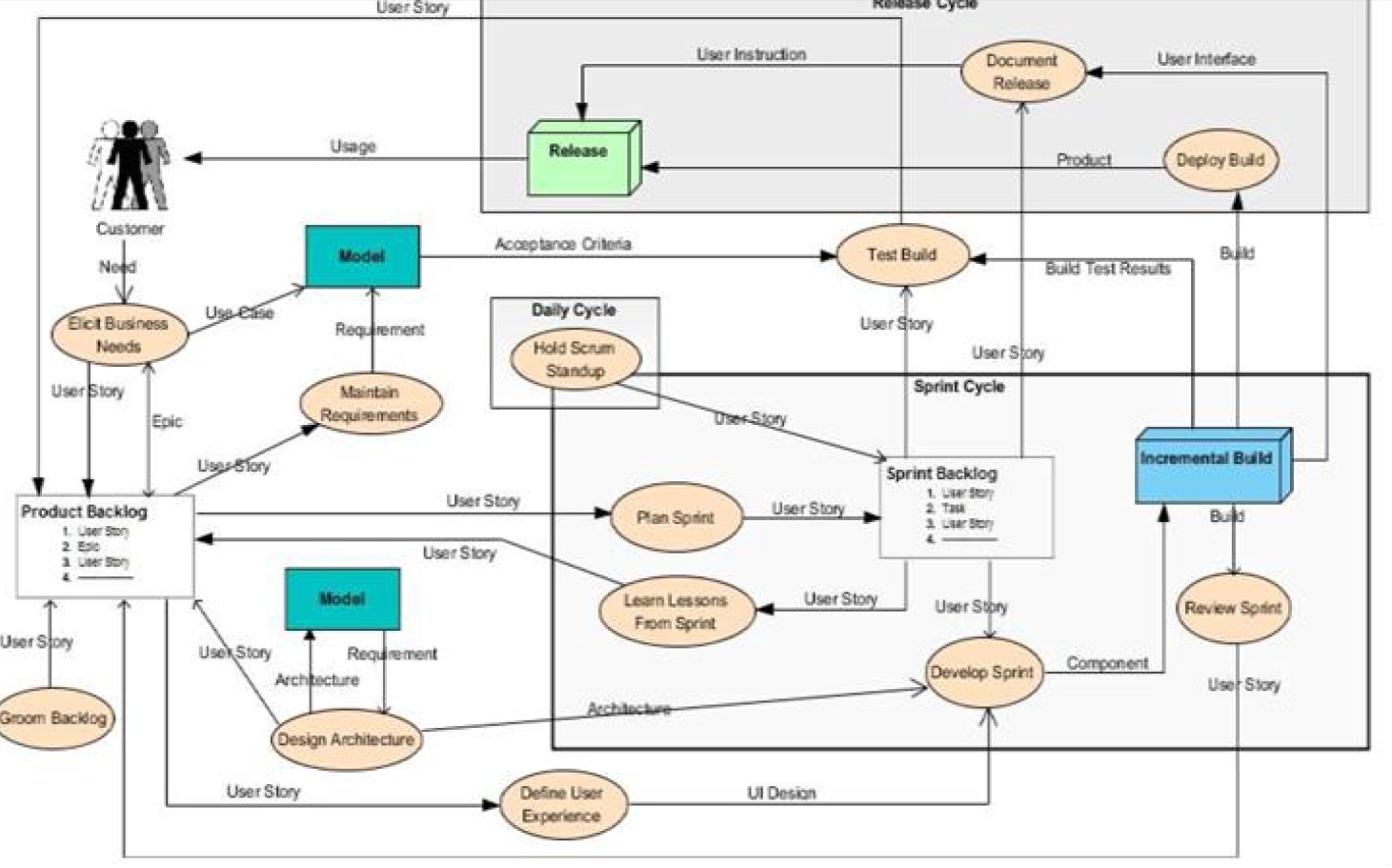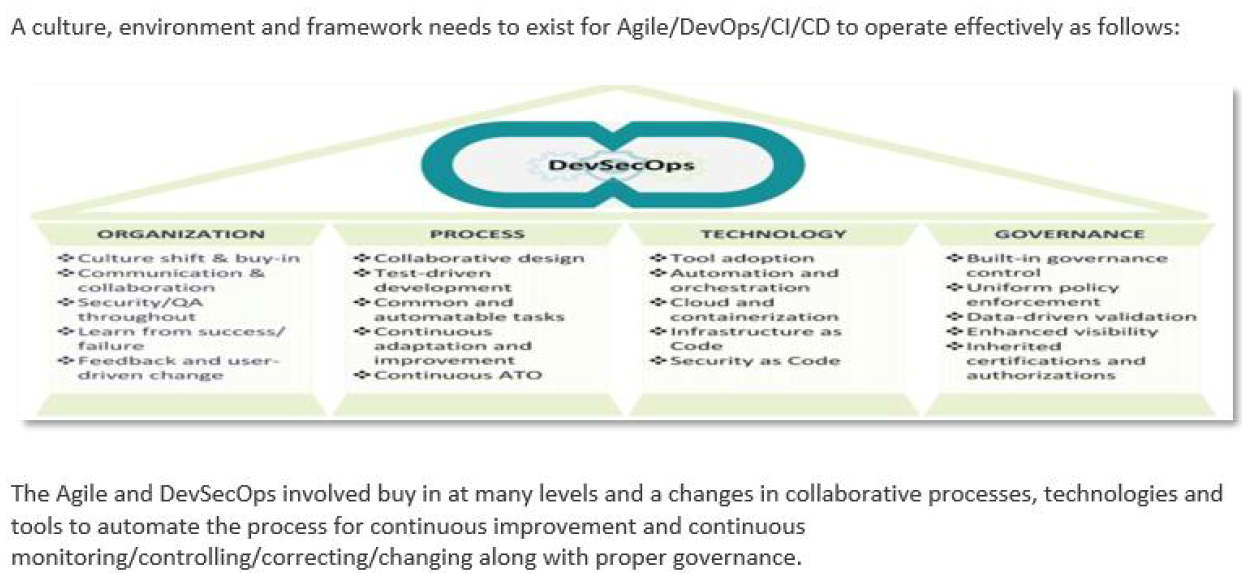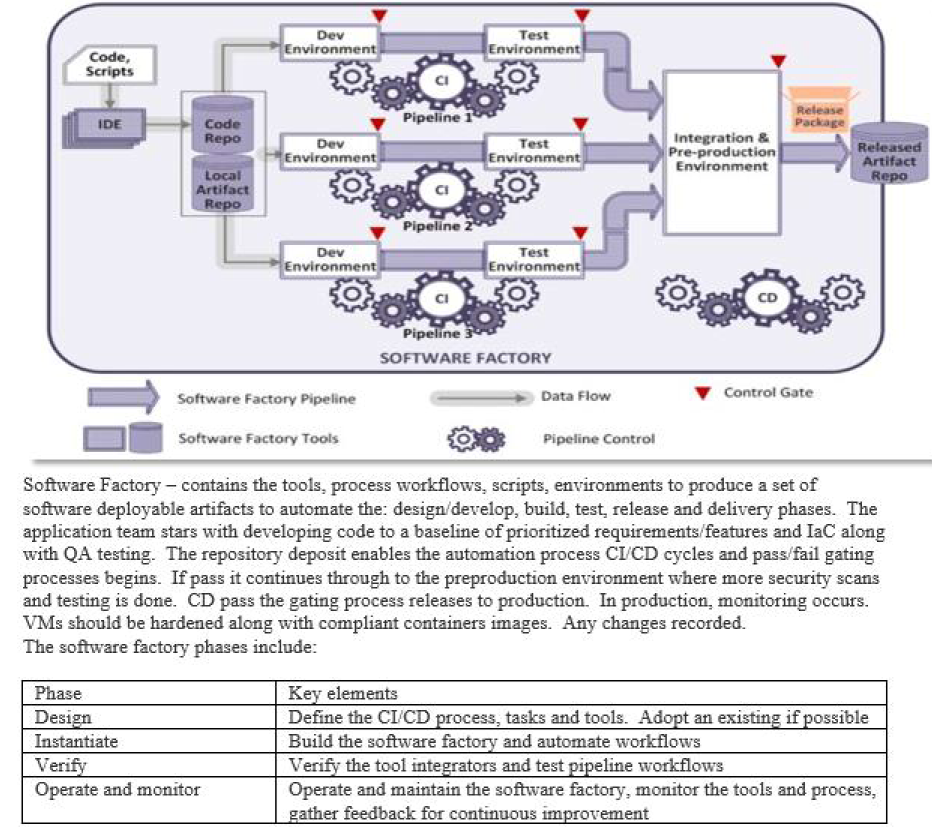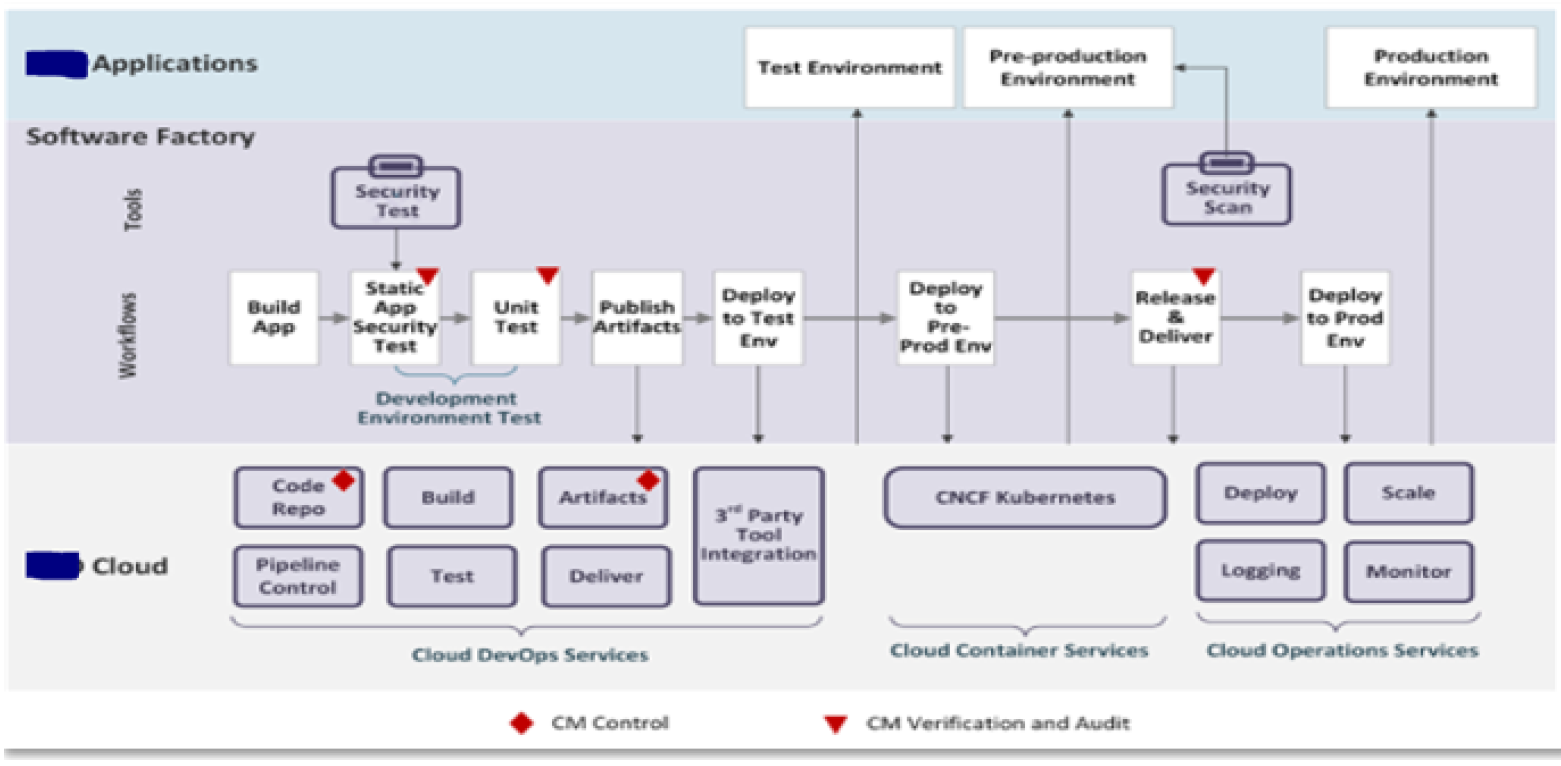Talk:Agile
What is Agile (ref https://agilemanifesto.org/principles.html ) Agile is a collection of methodologies. An iterative approach to project management and software development that focuses on collaboration, customer feedback, and rapid releases.
What is DevSecOps (ref https://www.devsecops.org/ ) DevOps is an approach to software development that enables teams to build, test, and release software faster. In a DevOps environment, developers and operations teams work side by side throughout the entire process of developing, deploying, and managing applications. Build small, fix fast, fail fast and learn well continuously.
DevSecOps CI/CD (ref https://public.cyber.mil/devsecops/ scale accordingly (to the size, complexity, criticality of your project/product development cycle)
DORA https://www.devops-research.com/research.html are we there yet? where are we now and what are we aiming for? thus, Agile maturity models are important. Minimize chase chaos, fighting fires, with massive silos (knowledge sharing/growth), and a heroes welcome https://www.performancemagazine.org/five-levels-of-organizational-maturity-performance-management-perspective https://kulkarniprasadp.medium.com/advancing-the-agile-maturity-assessment-model-fed2e8d9cb63 https://info.thoughtworks.com/rs/thoughtworks2/images/agile_maturity_model.pdf
How do you know where to go if you don't even know where you are now... need a sense of direction and strategy/map. Thus, a maturity model helps one aim towards some goal.
And, lets talk about requirements. Everyone thinks that - we're Agile! we don't need requirements cause the client/SME/stakeholder is right beside us every step of the way. But, we all know in reality getting the time/resources at the time you need key SMEs/stakeholders can be a challenge. (ref https://www.modernanalyst.com/Resources/Articles/tabid/115/ID/5832/A-Business-Analysts-Experience-With-Scrum.aspx )
I have been on many many projects. Sure some don't require elaborate requirements depending upon the size, complexity, criticality, scope, costs, resources, experience/wisdom/knowledge etc... but many do - at least a baseline of SMART requirements which evolve. The best projects I have been on have been iterative, incremental and iterative in approach involving key SMEs/stakeholders producing prototypes and proof of concepts with a SMART baseline of requirements which evolve with time to manage scope, costs, resources, schedule, quality, risks... Without requirements where will you start? Requirements allow you to prioritize, categorize, trace, realize, measure/monitor/correct accordingly and continuously and risk assess. I've been on projects where scope was all over the place, so were costs and resources were heading in every direction. Requirements were no place to be found and the project. A baseline of requirements which evolve provides direction.
Then comes the organization culture, people, process, governance and tools https://www.compact.nl/en/articles/continuously-improve-your-agility/ which is important. Are we meeting the client's needs and organizational mandates/objectives/vision/goals?
Projects I have been on that were a success: https://ottawacitizen.com/news/national/defence-watch/canadian-surveillance-satellite-system-now-operational Evolving 600 user stories from key SMEs/stakeholders using focus groups, surveys, and continuous feedback. https://ottawacitizen.com/news/national/rcmp-unveils-massive-border-security-project Evolving key scenarios to prove the concepts working with the field units empowering staff, adhering to the laws of each province, building small correcting mistakes quickly iteratively with prototypes (Boeing failed https://www.zdnet.com/article/boeing-virtual-fence-30-billion-failure/) https://www.defenseindustrydaily.com/canada-holland-order-17-sirius-shipboard-longrange-irst-sensors-updated-02183/ building iteratively with many prototypes/proof of concepts, with key SMEs in the loop and a good baseline of requirements (from defense research), with good people, tools, process (achieved CMMI level 5) with direction, commitment, goals, small builds
ref https://www.pmi.org/learning/library/requirements-management-planning-for-success-9669 https://www.modernanalyst.com/Resources/Articles/tabid/115/ID/5624/Requirements-Life-Cycle-Management-with-Azure-DevOps.aspx https://www.pmi.org/learning/library/identify-factors-cause-project-failure-2442 https://www.modernanalyst.com/Resources/Articles/tabid/115/ID/5624/Requirements-Life-Cycle-Management-with-Azure-DevOps.aspx https://www.pmi.org/learning/library/requirements-management-planning-for-success-9669 https://www.pmi.org/learning/library/seven-causes-project-failure-initiate-recovery-7195 https://www.proofhub.com/articles/reasons-why-projects-fail https://kulkarniprasadp.medium.com/advancing-the-agile-maturity-assessment-model-fed2e8d9cb63 https://www.clearavenue.com/agile-devops.html
The software factory:
